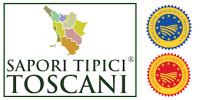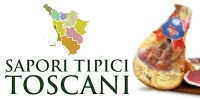San Gimignano - The old town centre and its major sights
With its unmistakable towers that make it easy to spot even from a long way off, San Gimignano is in the province of Siena, in the Val d’Elsa hills.
This town achieved its peak of prosperity and development between the 9th and the 12th century AD and stands at a crossroads of the Via Francigena and the Via Pisana. The Etruscans settled here first, between the 3rd and 2nd century BC. In the 10th century AD the town was miraculously spared the devastations of the barbarian hordes led by Totila when the Bishop of Modena, St Gimignano (after whom the town is named), appeared in a vision on top of the fortifications. In 1119 San Gimignano became a free comune, governed first by consuls and later by a Podestà. A severe outbreak of Plague in 1348 brought decline, however, which culminated in the town passing under the rule of Florence. The fortifications we see today date from 1251, and the first towers began to appear at about this time. Originally San Gimignano had no less than 72 towers. Only 15 survive, however.
The centre of town is fairly small and easy to visit. Access is through Porta San Giovanni, which leads into Via San Giovanni, lined by magnificent 13th and 14th century buildings. This street in turn leads to Piazza della Cisterna, which takes its name from the large octagonal water cistern built in 1273 that supplied the entire town. After Piazza della Cisterna there is Piazza del Duomo, the religious and political centre of San Gimignano. Here stands the Palazzo del Popolo, or Palazzo Nuovo del Podestà, which today houses the town council of San Gimignano. Built in the 13th century, the building is surmounted by the impressive 54-metre tall Torre Grossa tower, erected in 1311. The tower is open to the public by passing through the Museo Civico that is also housed within the palazzo. The museum contains a number of interesting Florentine and Senese School paintings from the 13th century, as well as 15th century works by Pinturicchio, Filippino Lippi and Benozzo Gozzoli. The exterior of the building is crowned by crenellations added in the 19th century and by a gallery with a parapet known as arengo.
The Duomo, also known as the Chiesa Collegiata, is of Romanesque design and is consecrated to Santa Maria Assunta. In 1460 Giuliano da Maiano designed an enlargement of the building. The interior is structured around three naves and contains a cycle of mid-14th century frescoes of the Senese School, as well as well-preserved frescoes by Ghirlandaio depicting Episodes of the Life of St Fina in the Chapel of Santa Fina. There are also some sculptures by Giuliano and Benedetto da Maiano.
Porta San Matteo leads into Via Cellolese and to the Romanesque-gothic Church of Sant’Agostino. The single nave interior has a truss ceiling and three ogival apses. Around 1450 Frà Domenico Strambi commissioned the building of the cloister. The remarkable painting that hangs above the high altar is by Pollaiolo and depicts the Crowning of the Virgin With Saints (1483). The main chapel contains a cycle of frescoes by Benozzo Gozzoli, of Episodes from the Life of St Augustine, completed between 1464 and 1465. Other less important churches in San Gimignano are the Church of Santo Bartolo, the Church of San Jacopo, the Church of San Piero and the Church of San Lorenzo in Ponte. The Museo d’Arte Sacra is also well worth a visit, with a collection that includes a number of extremely fine canvases, paintings on wood and fragments of stone tablets from convents and churches in the area or from the Collegiata. The Museo Archeologico contains Etruscan, Roman and Medieval finds unearthed in archaeological digs in the area around San Gimignano.
The fact that this town has remained virtually intact over the centuries offers a fascinating insight into what life was in this area in the 13th century. San Gimignano and the surrounding area are also well known for their excellent cuisine and for produce such as cured meats, vegetables preserved under oil, and wine. This area is the home of Vin Santo, as well as Vernaccia di San Gimignano, Rosso and Rosato di San Gimignano – all quality DOC certified wines.
• Siena in the Renaissance
• Siena in the Middle Ages
• Siena in Antiquity
• Town Map Siena
• Farm Holidays and Country Houses
• Residence, Apartments
• Bed & Breakfasts
• Historical Residences
• Last Minute Siena
• Restaurants
• Pubs & Wine Bar
• University for Foreigners
• Palazzo Chigi-Saracini
• Palazzo d’Elci degli Alessi
• Loggia della Mercanzia
• Palazzo Sansedoni
• Palazzo Chigi-Zondadari
• Fonte Gaia fountain
• Carthusian Monastery of Pontignano
• Forte di Santa Barbara
• The Duomo – The Cathedral of the Assunta
• Church of the Osservanza
• The Oratory of San Bernardino
• Church of San Francesco
• Short Biography of St Catherine of Siena
• St Catherine Sanctuary
• Church of S. Niccolò al Carmine
• Bologna-Buonsignori museum
• Accademia dei Fisiocritici
• I Musei Senesi
• The Palazzo Pubblico and the Torre del Mangia
• Piazza del Campo
• The Montagnola Senese and the Fortified Village of Sovicille
• The Castles of Belcaro and Quattro Torri
• The July and August Palio
• The Contrade
• The Days of the Palio
• The Drappellone
• The Eve of the Palio
• The Corteo Storico Procession
• The Race
• The Patron Saint and Oratory of Each Contrada
• Weekly Appointments in each Contrada from April onwards
• Croce del Travaglio Place
• From Piazza del Campo to the Duomo Along Via di Città
• The Curves of Piazza del Campo
• Costarella dei Barbieri street
• Borgo d’Ovile
• The Terzo of Camollia – main streets
• Casato di Sopra e Casato di Sotto
• Terzo di San Martino district
• The Terzo di Città District - Via Stalloreggi, Via San Quirico
• The Terzo di Città District – The Pinacoteca Nazionale
• Golf courses in Siena and Tuscany
• Wedding in Tuscany - Siena area
• San Casciano dei Bagni
• Chianciano Terme
• Bagni San Filippo
• Bagno Vignoni
• Rapolano Terme - Baths of San Giovanni and Baths of the Antica Querciolaia
• The Countryside around Siena and its Thermal Water Springs
• SkiPass Monte Amiata
• WebCam sul Monte Amiata
• Meteo Monte Amiata
• The Val d’Orcia and Its Main Towns
• Pienza - the old town centre
• Montepulciano - the old town centre
• San Quirico d’Orcia - the old town centre
• Montalcino and the Land of Brunello
• The Abbey of Monte Oliveto Maggiore and the Crete
• The Crete Senesi
• Castellina in Chianti and the Via Chiantigiana Towards Siena
• Siena and Southern Chianti - from the Castle of Montalto to the Castle of Brolio and on to the Castle of Meleto
• The Chianti Hills - Monte Calvo, Monte Luco and Monte San Michele
• Cortona and the Valdichiana
• San Gimignano - The old town centre and its major sights
• The Val d’Elsa - Monteriggioni and Colle di Val d’Elsa
• Along the Old Via Francigena
• Oleum Evo online selling
• Sapori Tipici Italiani buy online now
• il Prosciutto Cotto









